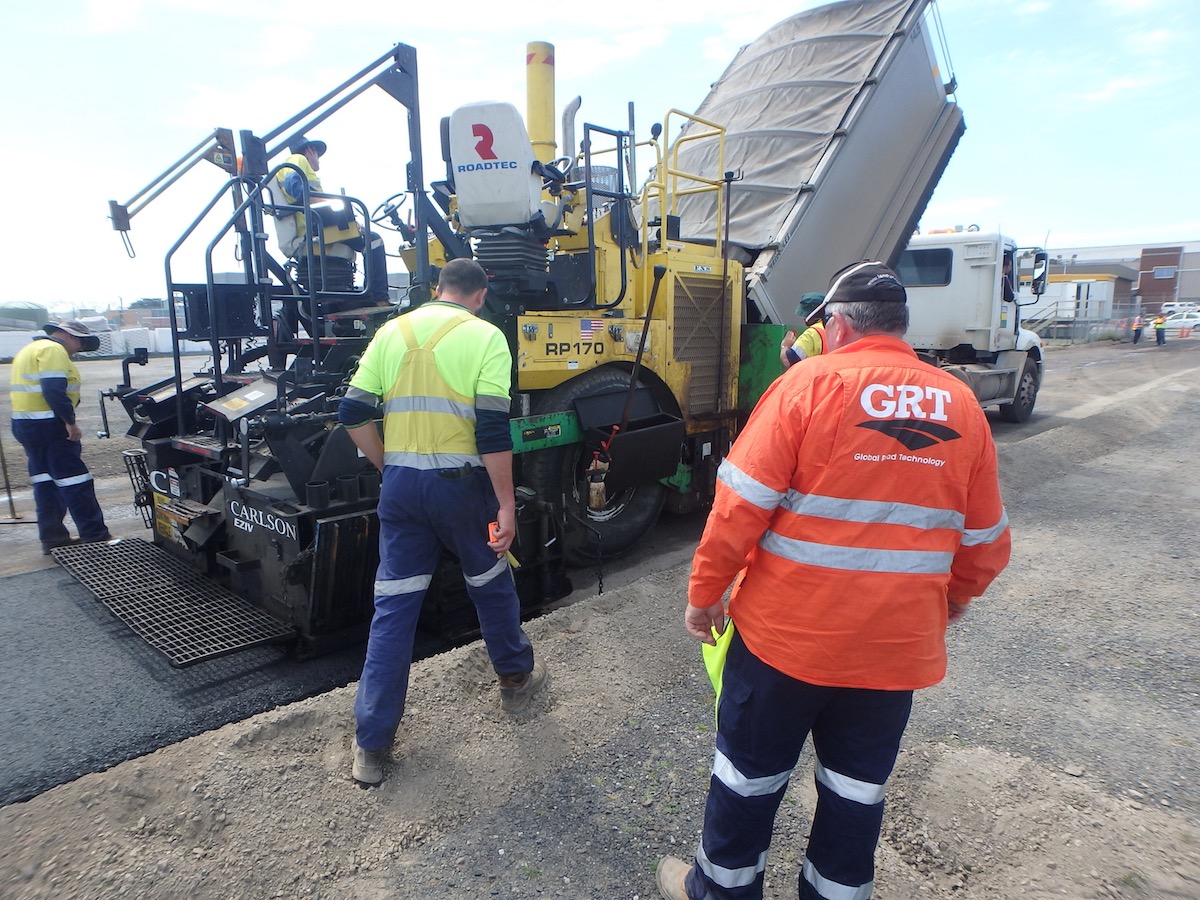
High modulus asphalt EME Class 2 (EME2) is a high-performance and high-quality road construction material intended for use in heavy duty pavements due to its exceedingly high modulus. It is particularly suitable in the following situations:
EME2 is predominantly used for structural asphalt layers, i.e., base layers; and is not intended for use as a permanent wearing course. In the State of Queensland, Australia Technical Specification, MRTS32 High Modulus Asphalt (EME2) sets out the requirements for high modulus asphalt EME Class 2 with a nominal aggregate size of 14 mm. EME2 asphalt shall be constructed in accordance with the general requirements for dense graded asphalt specified in MRTS30 Asphalt Pavements and Annexure MRTS30.1, unless those requirements are specifically excluded or amended by MRTS32.
In this article, Global Road Technology discusses the important aspects of high modulus asphalt in according to TMR Standards in Queensland, Australia, but with a view to global applications.
High modulus asphalt in the form of hard-grade asphalt binder was first introduced in the 1960s in France and originally developed by the French Road Institute or Laboratoire Central des Ponts et Chaussées (LCPC) in cooperation with road enterprises. It was mainly used as base/binder course known as Enrobé a Module Élevé (EME) and wearing course known as Bitumineux Beton Module Élevé (BBME). Although these mixtures were designed to serve as either base courses or binder courses, they were later extended to the wearing course. There are two main types of EME mixtures in the French specification, EME1 and EME2, with EME2 having a higher binder content (6% vs 3.85%) and lower avoids (less than 6% vs up to 10%) than EME1 to achieve longer durability, superior rutting resistance and satisfactory fatigue resistance. Application experience of EME2 indicated that it can reduce asphalt pavement thickness due to its high stiffness and specifically a quarter to a third base layer thickness reduction was reported if EME2 was used for base course. In Queensland, Australia EME2 is the type of high modulus asphalt predominantly used according to MRST32 Technical Specifications.
In recent years, the use of high modulus asphalt to obtain good rutting resistance has attracted more and more attention in Europe, China and other countries. In general, there are three approaches to produce high modulus asphalt:
High modulus asphalt produced with hard grade asphalt binder usually faces concern of poor low-temperature cracking performance. Various methods such as increasing asphalt binder content, reducing air void contents, and using modified asphalt binder have been used. Natural bitumen with low penetration value is typically blended with based bitumen to produce modified binders meeting different penetration requirements. The rock bitumen is another type of natural bitumen which has stable physical and chemical properties. Over time different EME2 high modulus additives have been used in the modification of bitumen. These include linear type and star type SBS, polyphosphoric acid and crumb rubber, and polyester fiber.
The standard test methods for EME2 materials in Queensland are used to test properties of the (1) aggregate and filler, (2) filler, (3) binder and (4) asphalt. Different properties are tested, and the following are the standard tests performed:
Different clauses govern properties tested on asphalt placement and the finished pavement. The procedures test certain properties at a minimum testing frequency. The following are the properties tested in Queensland:
To enhance rutting resistance of asphalt pavements, EME2 has proved effective. However, EME2 binders do not always offer a perfect solution to everything. There have been mixed fatigue cracking performances of EME2 binders, therefore it is important to evaluate the rheological properties of EME2 binders together with fatigue cracking resistances, which help gain a more comprehensive understanding of EME2 binder performances. EME2 have generally been observed to possess high stiffness and can resist the development of permanent deformation. Engineering design needs to take into account the benefits they bring to a pavement design, whilst allowing for perceived drawbacks.
References
Your feedback is important to us. If you enjoyed reading this Global Road Technology industry update and found it informative, please let us know by leaving a REVIEW.
Are environmental regulations, health and safety concerns or potential profit loss a concern right now?
Contact Us Now